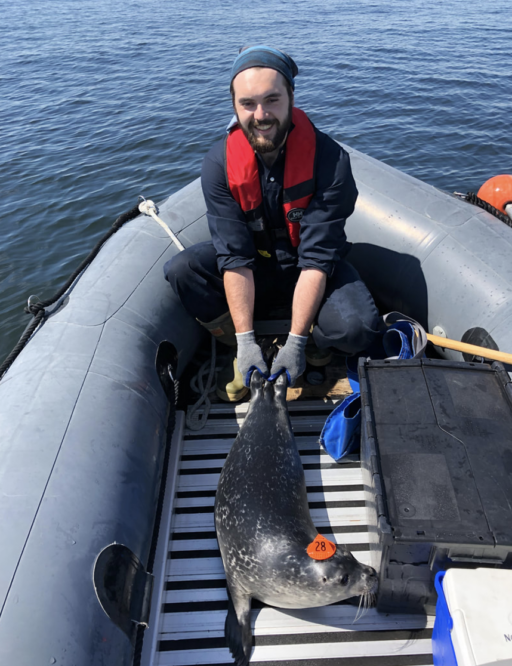Seals have been spotted all over Atlantic Canada wearing what appears to be little yellow hats, according to several eyewitness accounts. But it isn’t for fashion—it’s for science.
A joint research program between the Université de Sherbrooke and the Department of Fisheries and Oceans Canada (DFO) aims to better understand the habits and behaviours of harbour seal pups in the Maritimes. The little “hats” are actually markers part of this project.
“We use these hats as markings so we can recognize the individual seals without having to take them out of the water,” says Fanie Pelletier, a biology professor at the Université de Sherbrooke and an academic collaborator with the DFO. “They are simply a small plastic pyramid that is stuck to the fur of the seals and will fall off naturally during moulting, when the seals are around one year old.”
Two seal pups hold up traffic on Prince Edward Island
The seals are captured, marked, and released by the research scientists, and each little hat is numbered and assigned to a specific pup. These markings are crucial to tracking seal populations, migratory behaviour, pup survival, and eating habits. “We are trying to estimate the abundance of the population,” says Pelletier. “We want to know if the pups are surviving and if their population has increased over the years.”
 Photo Courtesy Fanie Pelletier
Photo Courtesy Fanie Pelletier
Meet the Steller sea lion, which is often confused for the harbour seal
So far, the program has been a success and has tracked recent increases in seal populations in the Gulf of St. Lawrence. “By having information on how many pups have been captured and how many we recapture or spot, we can estimate how many there are in the colonies,” says Pelletier. “This information is useful to know if the population is growing and if resources are limited. We can also know if they move between colonies and how much they grow between captures and sightings.”
As for the hats, don’t get too used to the yellow ones. “We change colour each year to make sure there is no overlap between years. This summer, our hats will be pink,” says Pelletier. The researchers always use colours that are easy to spot from a boat. The hats are 3D-printed using a special kind of lightweight, biodegradable plastic to minimize their impact on the environment when they fall off and reduce intrusion into the seals’ lives.
The DFO relies on people to inform the organization if they spot a seal wearing a little yellow (or pink) hat. If you happen to see a seal pup wearing one of the markers, you can report it to the DFO here. Doing so helps the research study and contributes to the management of harbour seal populations in Atlantic Canada.
 Photo Courtesy Pier-Olivier Cusson
Photo Courtesy Pier-Olivier Cusson
Related Story Poppy the oil-spill-sniffing dog is doing important research in Northern Ontario
Related Story Take a tour of Iceopolis, an ice sculpture garden created by Waterloo resident Robert Aitkin
Related Story Chronic wasting disease continues to spread throughout Alberta’s deer populations